- Administrator
- Albums and Singles
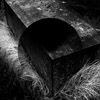 Culled from home demo recordings, this new artist flexes his muscles in that dark area where metal, drone, and noise mingle, and the result is a set of five very different tracks that capture the essence of the respective genres, but never feels like by the numbers simplicity.
Culled from home demo recordings, this new artist flexes his muscles in that dark area where metal, drone, and noise mingle, and the result is a set of five very different tracks that capture the essence of the respective genres, but never feels like by the numbers simplicity.
The opening "Room 237" is based on what is listed as a "buzz cable" as the only instrument. My assumption (perhaps false) is that this is the traditional noise tactic of running a simple sound through a battery of effects and seeing what comes out. The sound of the track seems to support my thesis though, because it sounds like the intersection of sustained Japanese noise roar with traditionally American cut up power electronics grind. It’s very old school, thick and crunchy in its approach.
"Peep Show Arcade," created using only tape recordings, features mangled guitar shredding cut up and fuzzed out through tape tricks, though it comes out more like a mutant take on thrash metal solos. "Should We Move On Or Stay Safely Away" is based on guitar, and mostly of the harsh sustained variety. The tone is completely fuzzed out and near the middle portion of the sonic spectrum. It’s not very dynamic, but there is a decent enough amount of variation to the sound, and lots of good scraping and grinding textures. It focuses more on the feedback, and the title is a Joy Division reference, so it has to be pretty good.
"R-Grey" is a more rhythmic track, based around overdriven guitar textures and stuttering, almost drum-like percussive sounds. It is a more dynamic piece compared to the previous, and its organic sound contrasts dense noisy sections with more sparse and open ones. However, through it all there is a grimy and crusted over sound that never goes away, and it is the audio equivalent of nausea. I mean that as an utmost compliment, however, as any sort of sound that can be so viscerally satisfying is always a great thing.
The disc closes with the title track, which is also a guitar-based piece. Here the sonic dirt and grime is not as prevalent as it was previously, but some of the debris remains. While also highly textural, there is more of a mystery to the track. It has a very dramatic sound to it, and the textures are just as tactile as in "R-Grey," but less gory.
Apparently his debut release, Dumont is already showing skill at weaving sonic textures that rival some of the best. For those (like me) who like their noise so thick and varied that it can almost be felt, this is essential listening.
samples:
Read More
- Administrator
- Albums and Singles
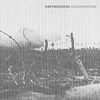 This album lives up to the band’s name, being a mechanized, but monochromatic, noisy death machine, hitting menacing metal tinged levels unheard since the end of Godflesh. It focuses on the aggression absent from Broadrick's newer work, and serves as the dark demonic yang to Jesu's pop-tinged yin. It is undeniably the work of Justin Broadrick, but feels more like a collaboration as opposed to a solo project, with the other members bringing their own elements to the table.
This album lives up to the band’s name, being a mechanized, but monochromatic, noisy death machine, hitting menacing metal tinged levels unheard since the end of Godflesh. It focuses on the aggression absent from Broadrick's newer work, and serves as the dark demonic yang to Jesu's pop-tinged yin. It is undeniably the work of Justin Broadrick, but feels more like a collaboration as opposed to a solo project, with the other members bringing their own elements to the table.
Hydra Head (US) /Daymare (JP)
Although it does feel spearheaded by Broadrick, his longtime collaborators Diarmaud Dalton (Godflesh, Jesu) and Dave Cochrane (Head of David, God, Jesu) are present here, as is Hydra Head & Isis leader Aaron Turner. With the exception of its combination of heavy, sludgy elements with lighter, more melodic pastiches, it does bear little resemblance to Jesu. Much of the album is murky, intentionally so, with Broadrick’s drumming and detuned bass assaults from either Dalton or Cochrane dominating the mix, the occasional vocals, usually screamed, by Broadrick and Turner, are low enough to not be a distraction.
The best parallel to draw to this album is a more obscure Broadrick release, and that is the Ghosts album from Techno Animal, though here it is a bit more of an organic sound with less of the jazz trappings that were present on that disc. There are some similarities to the Curse of the Golden Vampire project with Alec Empire as well but this is far more "metal" and less electronic in nature.
Opener "Wolf at the Door" exemplifies this formula: crashing, loose bass thuds, simple but brutal drumming, and buried screams from either or both vocalists, but all lead by a melodic riff that could be leading a much more mellow and peaceful track. "Vultures Descend," which was released as a free download almost a year ago, even tosses out the melodic stuff, but keeps an electronic musical underpinning below the otherwise pure white noise and distorted drumming that make up the track.
There is more variation, and more of a Jesu feel, on both "When Attention Isn’t Enough" and "Wasted," the latter especially being a bit less noise focused and with its rudimentary drums and sludgy guitar and bass feels more like a modernized take on early Head of David, or something that wouldn’t have been too out of place on an earlier Godflesh record. "Just Breathing" also plods along with a traditional Broadrick guitar riff and even solo that could be off the Merciless EP from the mid 1990s.
The closing two tracks go the furthest into left field sonically. "Sweatshop" sounds like an intentionally lo-fi recording of the band rehearsing run through various digital filters, even tossing in a bit of chintzy drum machine before letting the track fall apart into noise akin to the early days of industrial. "Easy Pickings" is similar, but allowing more traditional guitar playing to rise up to the surface, directly contrasting some of the melodic Jesu stuff with pure electronic screech and noise. The Japanese Daymare pressing of this disc adds "We Are All Fucking Liars (Version)", which was the b-side to the limited 12” single of "Vultures Descend" and it takes a drastically different direction from the rest of the album. Filtering the original track occasionally down to just its purest melodic elements alternating with full on distortion and inhuman vocals, and then adding in slow, overdriven noise beats that sound like they’re from a late-period Techno Animal album. The track is not essential by any means and feels substantially different from the rest of the album, but it is interesting to hear such a different take on the material.
Disconnected is definitely a completely different project from Jesu, but it does have that undeniable Justin Broadrick sound to it. Fans from the Godflesh days won’t be shocked at all, but newcomers only familiar with the "lighter" Jesu material probably will not be interested in this. It is a murky, distorted set of songs that closer listening can reveal a greater depth to, even though it lacks the heavy, diverse beauty of Broadrick’s "main" project.
samples:
Read More
- Administrator
- Albums and Singles
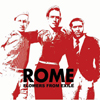 Rome's bold and prismatic vision is anchored by one of the strongest vocalists I've heard this year. Jerome Reuter's commanding and resonant voice is a significant part of this band's appeal, but it's the exotic and manifold musical styles used throughout the record that generate the most excitement and make Flowers From Exile a joy to hear.
Rome's bold and prismatic vision is anchored by one of the strongest vocalists I've heard this year. Jerome Reuter's commanding and resonant voice is a significant part of this band's appeal, but it's the exotic and manifold musical styles used throughout the record that generate the most excitement and make Flowers From Exile a joy to hear.
Jerome Reuter's deep tenor recalls the deliveries of both Dave Gahan and Nick Cave. Coincidentally, the music he writes draws from the same deep well of drama, personal confession, damnation, and redemption implemented by both of those writers. On this record Reuter has more in common with the likes of Nick Cave or someone like Bob Dylan than he does with a pop star, but his music isn't a simple reflection of any one musical genre. Flowers From Exile is supposedly based upon the events of the Spanish Civil War, a conflict in which Retuer's family partook. The various samples used throughout the album, as well as its exotic arrangements, intimate an atmosphere of conflict and resignation, but specifics never quite materialize the way they would in folk music or songs of political protest. More plainly, Flowers tackles the familiar topics of isolation, desperation, and displacement whether it be political, familial, or religious in scope. Reuter's use of broad metaphor makes personal investment easy and ultimately lends the album a melodramatic tint, but the band's restraint and honesty takes the cheap catharsis of melodrama and converts it into a spectrum of various intrigues and ambiguities. In this way, the band's claim that they are influenced by chanteurs makes sense, especially if that influence were to include the likes of Jacques Brel or Serge Gainsbourg. As is the case with nearly every album conducted by a poet-musician, there are spots of lyrical extravagance that border on cloying, but Flowers' many merits make such excesses forgivable.
Many of those merits can be attributed to Rome's other half, Patrick Damiani. Responsible for producing Flowers and writing its arrangements, Damiani populates Reuter's world with the sounds of field recordings, foreign voices, martial rhythms, atmospheric howls, and a variety of musical styles from flamenco to pseudo-industrial collage. Despite that variety, the album stays focused and never degenerates into a formless mush. Comparisons to famous "neofolk" or "apocalyptic folk" groups makes sense to some small degree however the band's versatility is enough to distinguish them from groups like Death in June or Sol Invictus, not to mention their subtlety and restraint. Rome concentrates the majority of their energy on quality songwriting, a fact crystallized in both the memorable melodies and diverse forms employed throughout Flowers. The group rarely falls back on the verse-chorus-verse formula, they never rely on atmosphere or pomp to hold their music up, and the train of samples and instruments that pepper the record gel with the songs more often than they clash.
Patrick garnishes Jerome's songs with layers and layers of instrumentation, but uses the guitar to hold his ideas together. So, while welters of noise sizzle beneath some songs and operatic voices swell up beside others, Damiani's strumming moves forward and provides both a musical and narrative momentum. And the best songs have quite a bit of momentum to them. "The Secret Sons of Europe" and "To Die Among Strangers" are heavy and propulsive numbers with explosive qualities. One is a rhythmically intricate piece with sharp corners, sampled choruses, understated solos, and a gilded horn section. The other is an emotionally heavy performance accented by a quickly strummed guitar and an elegant violin part. They put the album's slowly developed tension to good use and, as a result, are two of the more memorable songs on the record. Rome's slower, more traditional songs do not inspire equally glowing reactions, however. Both "Odessa" and the titular closer feel somewhat empty or unfinished next to their richly decorated brethern. These songs are no less strong than any of the others, but they represent the places where Damiani's production does not rise the occasion. This is a minor annoyance, but it reveals that Reuter's voice is only as compelling as the music that surrounds it. Flowers From Exile is a gem of a record nonetheless, and its lackluster ending does little to compromise its many virtues.
samples:
Read More
- Administrator
- Albums and Singles
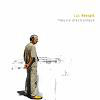 This 10 CD boxed set is an epic trek through Ferrari’s electronic compositions for Le Groupe de Recherches Musicales (GRM) from his early experiments in musique concrète in the 1950s up until his death (and beyond in one case). Along with detailed notes by Ferrari or those close to him, this is the definitive collection that covers all his most important works. This is essential listening of the highest order.
This 10 CD boxed set is an epic trek through Ferrari’s electronic compositions for Le Groupe de Recherches Musicales (GRM) from his early experiments in musique concrète in the 1950s up until his death (and beyond in one case). Along with detailed notes by Ferrari or those close to him, this is the definitive collection that covers all his most important works. This is essential listening of the highest order.
 
The majority of the first disc covers Ferrari’s earliest experiments with the GRM. The works included here like "Étude aux Accidents" and "Visage 5" are crude even when compared to Ferrari’s contemporaries at the time but they provide an interesting insight into how he developed his own sound world. These pieces are the most traditionally concrète of all the works included in the box set, made at a time when Ferrari was learning the ropes which he would later cut. However, the humor, the playfulness, and type of sounds used are Ferrari through and through. The first CD finishes with "Music Promenade," which is reminiscent of Walter Ruttman’s 1930 movie for the ears "Wochende." It hints at the direction he would take over the course of his career, pushing natural sounds and human character to the fore and leaving inorganic music to his colleagues.
It was the 1960s when Ferrari truly flourished and the second and third discs of L’Œuvre Électronique feature the pieces that he will be remembered for. Hétérozygote sounds light years ahead of the material on the first disc (although it was constructed around the same time as some of the pieces) and is the first bona fida example of Ferrari’s classic approach. The abstract sonic elements sound utterly cosmic and the juxtaposition of identifiable sounds with these concrète elements highlights Ferrari’s views on where electroacoustic music should go. His combination of man and machine is something that he would explore more thoroughly on Dialogue Ordinaire avec la Machine (also included in this box set) and would later be developed by bands like Kraftwerk in the decades following his initial compositions.
Disc 3 features all four parts of Ferrari’s most famous work, Presque Rien was started in 1967 and finished in 1998 (the last part only released in 2005 on Son Memorisé). It begins from almost nothing; the first part is shocking in its lack of electronic manipulation. Most of the four parts are sparsely arranged: a gentle murmur of life interspersed with subtle electronics mimicking the natural sounds (lightning and cicadas being particularly exciting listening). With Presque Rien he moves his focus onto people and their ecology rather than the abstractions and machinations of the rest of the concrète school. His documentation of human culture merges journalism with voyeurism, especially on "Presque Rien avec Filles" ("Almost Nothing with Girls") where Ferrari records young women having a picnic and tries to get inside the female mind, yet another recurring theme in his work (As he puts it: "A composer campaigning for women's liberation."
Far-West News is a sprawling catalogue of the people Ferrari and his wife, Brunhild, meet on their travels through the western United States in 1998. At one point, Ferrari describes how he envisions the piece: an audio newspaper. This again calls back to Ruttman’s "Wochende" and to similar experiments like the East Village Other Electric Newspaper but needless to say, Ferrari trumps them all. Recorded around the time of the scandal surrounding Bill Clinton and Monica Lewinsky, Ferrari’s interviews with ordinary Americans find them mostly indifferent if not permissive of the former President’s private life (at odds with the mainstream media’s representation of public outrage at the time). The interviews are interspersed with readings from newspapers (including an article about the film version of Lolita, again Ferrari explores America’s views on sexuality). All this plays out over a backdrop of Luc and Brunhild ordering (or trying to order) food across the country, Ferrari being the stereotypical Frenchman whose twin desires are food and sex.
While this set ignores Ferrari’s compositions for traditional instruments, it is possible to get a very clear picture of his work and ideology from this one (albeit very important) aspect of his work. I do not need to stress how much of an innovator Ferrari was, even now pieces like Danses Organiques and Dialogue Ordinaire avec la Machine sound mysterious and deeply complex; to my ears most electronic musicians are still playing catch up with him. Newer pieces such as Archives Génétiquement Modifées and the poignant Les Arhythmiques (composed in 2003 following Ferrari’s hospitalisation for cardiac arrhythmia, the condition that would later lead to his death) show that his creativity burned bright even into his 70s. Even posthumously, his ideas live on as Brunhild Ferrari created the anything but derivative Dérivatif following his specifications.
L’Œuvre Électronique is the most fitting monument to Ferrari’s. Bearing in mind that there are 10 CDs worth of impeccable compositions as well as a detailed book (in French and English) that features a short biography, notes by Ferrari and an interview with Brunhild; this is also an exceptionally good value too with INA/GRM keeping the price as low as possible. Hopefully, there will be a sister release of his works for traditional instruments to accompany his electronic works but for the moment there is more than enough material here to keep anyone going for a long, long time.
samples:
 
Read More
- Administrator
- Albums and Singles
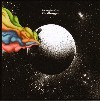 Since the early '90s, C. Spencer Yeh has followed the typical path of the contemporary noise-maker, releasing dozens of solo and collaborative works through numerous labels on every format imaginable. Whether it is released under the Burning Star Core moniker or under his proper name, the varying quality and availability of Yeh’s work makes understanding it, let alone assessing it, a difficult task. It shouldn’t be that way. Challenger provides all the proof needed to establish him as versatile and provocative musician.
Since the early '90s, C. Spencer Yeh has followed the typical path of the contemporary noise-maker, releasing dozens of solo and collaborative works through numerous labels on every format imaginable. Whether it is released under the Burning Star Core moniker or under his proper name, the varying quality and availability of Yeh’s work makes understanding it, let alone assessing it, a difficult task. It shouldn’t be that way. Challenger provides all the proof needed to establish him as versatile and provocative musician.
What makes Challenger such a clear statement of Yeh’s talent is that it’s an album in the standard sense, a collection of interrelated songs on one format, rather than some random hodge-podge of disembodied “content” released without formality or context. Without its intended sequencing, each piece on Challenger would suffer in isolation. The title track, which starts off the album, glides placidly along on an organ drone only to disintegrate into a mass of piercing chimes and tape hiss. The ending is succinct but violent, a tiny preview to the howling din of the following piece, “Beauty Hunter.” Its synth eruptions and off-kilter guitar loops sound wild and immense, but without the slow warning of the preceding track, “Beauty Hunter” would be a little less sublime. Sequencing is even more vital to the short and odd interludes that populate the middle of the album. “No Memories, No Pains,” a torrential assemblage of anonymous shouts and unidentifiable clicking, would seem aimless if was not followed by the menacing synth drones of “Hopelessly Devoted.”
C. Spencer Yeh knows when to hold back and when to go in for the kill. Challenger is unpredictable yet it is so well organized. When a cascade of noise appears on any given track, the effect is one of calculated surprise rather than random selection. Challenger also possesses a rough hewn quality despite its tightly controlled dynamics. This stems partially from wide-ranging recording quality of the album. The overall fidelity doesn’t differ, but each sound element within a given piece varies quite a bit. Most of Challenger was composed by Yeh at his home in Cincinnati, but parts of it were derived from fragments recorded in Kentucky, New York, Germany, and Portugal. The crowd sounds, tape hiss, and button noises (presumably from those recordings) worm their way onto otherwise pristine sounding synth tones. Calling this collage would be accurate, but that would denigrate Yeh as an artist. Anyone can make a collage. It would be better to call Challenger a mosaic, where the individual facets are shaped to form an original image. That Yeh reuses his own material does not suggest a lack of ideas. By fitting the pieces of his artistic past so well together, he is thinking critically about his art and by extension himself. His song titles, using words like beauty, memory, plans and mysteries, suggest a more personal approach on Challenger, rather than the routine and mechanical application of musical (or anti-musical) forms.
It is easy, but somewhat awkward, to call Challenger entertaining and thoughtful. Never mind them being considered contradictory, but those two words are almost never used to describe a "noise" album. It’s hard to guess whether Spencer had any audience in mind at all when he made the album or whether he put as much effort into it as any other record. It’s also hard to guess whether he will follow up with something just as enjoyable and as it is visceral. Perhaps it will be a retreat to his normal routine of recorded improvisations and collaborative projects, but those releases lack the coherence of his composed material. Like his peers in Wolf Eyes, Double Leopards, and Hair Police, Yeh’s best work is his most structured. That may contradict the free-wheeling zeitgeist of the American underground, but an artist of C. Spencer Yeh’s talent shouldn’t bother with churning out substandard work. Challenger is proof that noise-makers be can powerful even when they are disciplined and painstaking.
samples:
Read More
- Administrator
- Albums and Singles
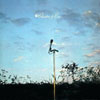 Deeming this meeting of minds a classic is certainly beyond cliché at this point, though to some degree the album still does not receive the recognition garnered by other ventures that the collaborators were individually involved in. Yet Bureau B, whose recent digs through the archives have revealed and shared some true gems of late, has graced the world with the album again, and its flow and thoroughness of conception is as apparent now as ever. There is a dignified sense of space here that fuels these compositions and promises them a life far beyond the 30+ years already lived by them.
Deeming this meeting of minds a classic is certainly beyond cliché at this point, though to some degree the album still does not receive the recognition garnered by other ventures that the collaborators were individually involved in. Yet Bureau B, whose recent digs through the archives have revealed and shared some true gems of late, has graced the world with the album again, and its flow and thoroughness of conception is as apparent now as ever. There is a dignified sense of space here that fuels these compositions and promises them a life far beyond the 30+ years already lived by them.
Of course with a cast like this it is tough to go wrong, and this meeting feels far less like a collaboration between Hans-Joachim Roedelius, Dieter Moebius and Brian Eno than it does a logical meeting of minds that could well have lasted far beyond the two albums the trio would release together. Often touted as the first German ambient album, the release reads far more like an instrumental soundtrack whose purpose is not so much to drift into the background as it is to elevate the occurences happening around it.
This is apparent from the first track alone, the classic "Ho Renomo," which features Can bassist and conceptual rocker Holger Czukay's bobbing repetitions fueling the effervescent electronic and piano drift surrounding it. Each member's contribution can be clearly deciphered, a remarklable synthesis of sounds and styles that feels like all of them without sounding entirely like any of them.
The album's strong point is how effortlessly it moves from piece to piece, careening into outer bounds on the following "Schone Hande," whose clear melody line feels as fragile as the cloud-like atmospherics and hydrolic drops surrounding it. Like everything here, the work seems in a kind of shifting stasis, hovering above the floor without ever rising too high. The sorrowful "Steinsame" has more than its share of Eno's recognizable footprints, as does the following "Wehrmut," but the feel is lighter and slightly more compositional, with a subtle momentum where Eno would often let the piece stand. Elsewhere, "Mit Simaen" and "Die Bunge" read like true Cluster tracks, while the rhythmic chord progression and thudded bongos of "Selange" sound like neither.
Whereas much of the album uses its broad instrumental palette quite subtley, the sitar of Okko Bekker on "One," which also features electronic groundbreaker Asmus Tietchens, is a raga tune for the elctric age, the sitar subtly maneuvering the synthesizer dips and thumb piano pulses. It is a fitting and comparably rowdy setup for the plan closer "Fur Luise," whose piano opening invites a sensitive and melancholy drawing that perfectly suits the album's overall mood, ending it with just the question mark necessary.
After all these years a lot of these now archaic electronic tactics should sound outdated but in the hands of authentic musicians such as these—whose senses of color, invention, and discriminate choice guide the proceedings with such care—the results are far from outdated. It seems instead that these pieces, though not necessarilly directly influential toward any specific genre, have become so engrained in the way that music is conceived today that these works make as much sense now as they ever have. It has become second nature.
samples:
Read More
- Administrator
- Albums and Singles
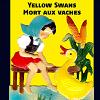 The most appealing thing about Peter Swanson and Gabriel Saloman is that compared to other groups from the great noise trend of the mid 2000s was their devotion to the psychedelic power of sheer sound. They never followed the ultimately boring route of power electronics white-out nor the well-trodden path of post-industrial filth, instead their focus was on the shimmering edges of reality that lay between the layers of noise. Their contribution to Staalplaat’s Mort aux Vaches series is no letdown in this respect as the four untitled pieces on this CD shake my immediate reality to the point where it is almost possible to see through to the other side.
The most appealing thing about Peter Swanson and Gabriel Saloman is that compared to other groups from the great noise trend of the mid 2000s was their devotion to the psychedelic power of sheer sound. They never followed the ultimately boring route of power electronics white-out nor the well-trodden path of post-industrial filth, instead their focus was on the shimmering edges of reality that lay between the layers of noise. Their contribution to Staalplaat’s Mort aux Vaches series is no letdown in this respect as the four untitled pieces on this CD shake my immediate reality to the point where it is almost possible to see through to the other side.
The opening piece sounds like a ropey tenth generation of a particularly loud Les Rallizes Dénudés bootleg, there is a guitar that is somewhat identifiable but everything is buried under the sound of the microphone breaking apart. The oversaturated recording is monstrous in its power and this inescapable but beguiling atmosphere persists for the length of the album. This immersion in sonic psychedelica reaches boiling point on the second piece, the duo reaching an intensity that should be an overload to the senses but the sensation of swimming through sound only increases.
As euphoric as the rest of the CD is, the final piece sees Swanson and Saloman pushing the music further out into the stratosphere. This last track is a rapturous 20 minute journey through space, slowly picking up speed and power until the earth is left far behind. On the surface, it is more of the same sheet metal guitar and murky electronics but there is a hidden force running beneath the music that makes it qualitatively different to the previous three pieces. It feels like Swanson and Saloman are putting their whole bodies and souls into the music, should anything go wrong there is a danger that they will be lost forever to us.
Psychic dangers aside, the biggest danger concerning this release is the CD destroying your stereo equipment. Granted, the packaging is another brilliant piece of work from Staalplaat; thick card with 3D graphics that look like they came straight from one of those sturdy picture books for toddlers. Unfortunately, the CD label is made from the same thick card and as such it will not play in most of the CD players I tried it in. I would not risk trying it in a slot-loading drive for fear that it would never come out and it was so tightly wedged in my laptop drive that it would not spin at all so caveat emptor.
Unfortunately this CD will not work in my PC so there are no sound samples, apologies!
Read More
- Administrator
- Albums and Singles
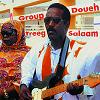 This second compilation of Salmou "Doueh" Baamar's exquisite guitar playing is as enchanting as the previous one. Trawling through his recordings from the '90s has turned up more gems, some as expected and one particularly surprising extended guitar workout. Yet, his guitar playing is just one facet of this wonderful music; it is how his western-influenced style is fully integrated into Sahrawi folk music to create something truly unique.
This second compilation of Salmou "Doueh" Baamar's exquisite guitar playing is as enchanting as the previous one. Trawling through his recordings from the '90s has turned up more gems, some as expected and one particularly surprising extended guitar workout. Yet, his guitar playing is just one facet of this wonderful music; it is how his western-influenced style is fully integrated into Sahrawi folk music to create something truly unique.
Treeg Salaam follows on from where Group Doueh’s previous LP on Sublime Frequencies left off; “Min Binat Omum” features joyous call and response vocals driven by a persistent tbal beat and Baamar’s liquid guitar playing. Across the album, his hypnotic and The recording quality on most of the tracks are of a higher level than on Guitar Music from the Western Sahara, although a couple of them do sound like they were recorded at a party (for that definitive Sublime Frequencies sound). The ecstatic vibe of the music is infectious, the groove might be unusual but it is not hard before I am bopping along to the songs.
After such an electric ride, the 20 minute jam that takes up all of the second side is a completely different experience. At first I found “Tazit Kalifa” to be fairly dull after the frenzied power of the first side but after multiple listens, this is one monster of a track. The smoky atmosphere combined with the guitar, organ and percussion make Group Doueh into some kind of African Can (but no amount of world music scavenging could make Can sound this exotic). The music slowly weaves around the intermittent vocals, making me wish I could decipher the lyrics (although perhaps the mystery is better). By the time the needle lifts off the vinyl, I am so lost in the waves of sinuous rhythms that it feels like hours have passed.
Bearing in mind that all of the material is from 1996 and earlier, this is an incredibly fresh sounding record. With bands like Sun City Girls, Grails, and the aforementioned Can bringing in so many “foreign” influences into their music, it is great to hear the influences of western mainstream rock like Jimi Hendrix going the other way and being used in an interesting manner. Doueh’s playing is unmistakably African but hearing those shadows of the kind of guitar playing that I grew up listening to coming through such alien arrangements is electrifying.
This album is currently vinyl only so unfortunately no sound samples at this point in time, apologies!
Read More
- Administrator
- Albums and Singles
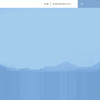 Consistent with the 12k sublabel's aesthetic, Tu M' are a duo of multimedia artists that work not only in the realms of sound, but in the video arts as well. Monochrome is four long tracks of laptop improvisations, recorded live by the duo. The video accompaniment is available via their Web site, but is unnecessary to enjoy the music. The album lives up to its title and is an intentionally minimalistic piece of ambient sound.
Consistent with the 12k sublabel's aesthetic, Tu M' are a duo of multimedia artists that work not only in the realms of sound, but in the video arts as well. Monochrome is four long tracks of laptop improvisations, recorded live by the duo. The video accompaniment is available via their Web site, but is unnecessary to enjoy the music. The album lives up to its title and is an intentionally minimalistic piece of ambient sound.
The opening "Monochrome #01" drifts glacially on gentle reverberated string tones. The tones are offset by some lower frequency bass pulses and what sounds like the occasional slow, quiet cracks in an arctic ice floe. There are the occasional moments of denser layered sound, but it stays mostly soft and melodic throughout. The change and variation is present, but it’s not a dramatic shift at all, and it has a consistent feel from beginning to end.
"Monochrome #02" is even more stripped down then the first, a buried ambient melody far, far in the distance that slowly comes into focus, but never dominates or becomes forceful. Instead, the swirling notes are content to haunt in the background under a gauzy layer of sound, like a thick fog around the entire piece. "Monochrome #03" is the shortest piece, clocking in at just over seven minutes. Unlike the prior two, it is a bit more forceful in its opening, with overt organ like notes swelling and then retreating like waves on a beach. There is less of a sense of sprawl here, as it feels more concise and rhythmic in its structure.
The closing "Monochrome #04" is nearly half of the album at almost 30 minutes. Dynamically, it follows the first two pieces more than the third, opening with almost pure silence, only the most miniscule tones lurk far off in the distance. The long, quiet opening resembles Bernhard Gunter’s hyper-minimalistic compositions, but constructed with more melody and musicality rather than digital glitch fragments. Through the slow build, bass textures and reverberated space enter, the former like thunder far in the distance, but never really become loud. The sound begins to peel away about 2/3rds through the track, fading away into a glassy silence.
There are some very beautiful sounds here, but Tu M' seem almost intentionally set on keeping them in the distant background rather than being a captivating force. Perhaps that is the intention all along, given that this is music intended for gallery installations. It is extremely difficult to listen to this while devoting full attention to the music. However, in the background while doing other activities, the frigid ambience seeps in subtly, but is not easily ignored.
samples:
Read More
- Administrator
- Albums and Singles
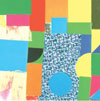 With drums and percussion courtesy of Aaron Moore (Volcano the Bear), this collaboration is a purely absurd, Dadaist outburst of jazz influenced noise. With cluster bomb percussion that rivals Peter Brotzmann's most chaotic compositions, violin abuse, and spastic turntable-ism, this is two sidelong tracks of noise that resembles very little else, which is probably a good thing for the world.
With drums and percussion courtesy of Aaron Moore (Volcano the Bear), this collaboration is a purely absurd, Dadaist outburst of jazz influenced noise. With cluster bomb percussion that rivals Peter Brotzmann's most chaotic compositions, violin abuse, and spastic turntable-ism, this is two sidelong tracks of noise that resembles very little else, which is probably a good thing for the world.
"The Beginning of the End" opens with high pitched shrieks and rattling percussion, which alternates between quiet passages and spastic turntable scrapes and drums that sound like they’re being thrown down a flight of stairs. The violin appears here and there, mostly in the form of strings being aggressively plucked and pulled. The mix has moments where it slows down and allows some breathing room before turning up the junkyard orchestra again. The dynamics closely mirror what is generally known as free jazz, with its restrained and wide open bits and contrasting blasts of pure chaos. It goes from harsh to absurd pretty quickly, with the turntable spitting out hyperspeed cartoon voices and electronic burbles. When the closing moments arrive, the violin and drums become disturbingly conventional, leaving me expecting another outburst at any time.
The second half of the album is "The End of the Beginning," and it isn’t far out of league from what was heard earlier. Opening with excessive violin torture and percussion like a bouncing rubber ball, there eventually arises a basic tom-tom drum beat that mimics the tension of the Jaws theme, with chaotic outbursts always around the corner. The contrasting random sound outbursts give it more a cartoon like quality though, rather than the pure darkness that could otherwise be there.
The middle maintains the jazz elements that were on the first piece, contrasting the calmer moments with machine gun beats and fragments of music that somehow manage to slip through the explosions. The jazz drumming and overdriven noise continues all the way through the end, where the electronic stuff crosses over into dead on harsh territory, and percussion blasts continue into the final moments.
This disc is definitely rooted in the free jazz tradition structurally, but the traditional horns and strings of the genre are supplanted by the everything–including-the-kitchen-sink instrumentation. At times its almost tiring though, and unlike a harsh noise record, the dynamics here vary so much that the transitions can be almost too jarring. With a tempo and dynamic that could be the audio equivalent of crystal meth, it probably shouldn’t be listened to before bedtime.
samples:
Read More
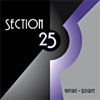 Relatively soon after their "return" album, Part-Primitiv, the classic Factory act has released another long player of new material that channels their classic post punk days into a more modern context, though here with an almost overly nostalgic bent that leaves it sounding a bit dated.
Relatively soon after their "return" album, Part-Primitiv, the classic Factory act has released another long player of new material that channels their classic post punk days into a more modern context, though here with an almost overly nostalgic bent that leaves it sounding a bit dated.